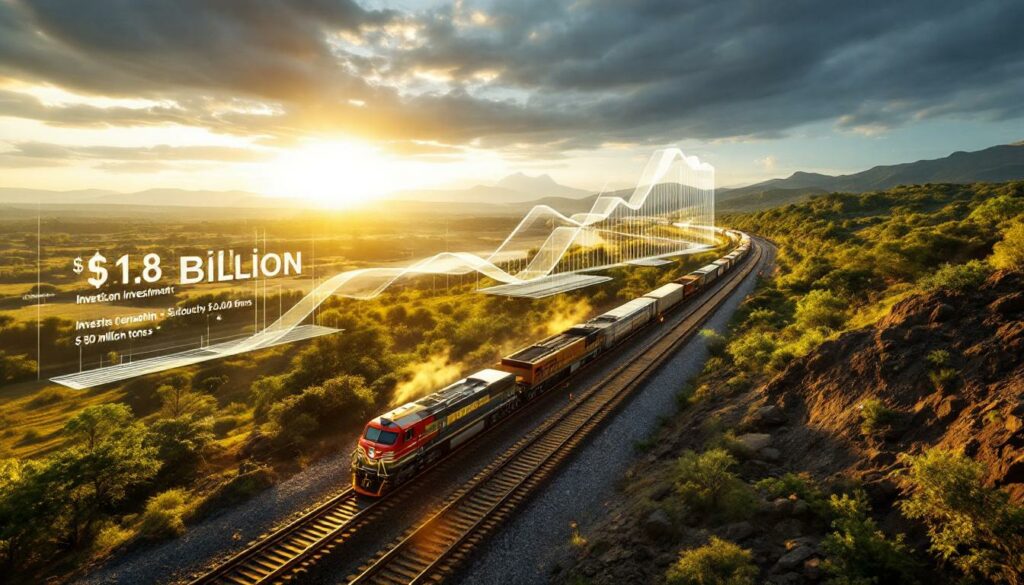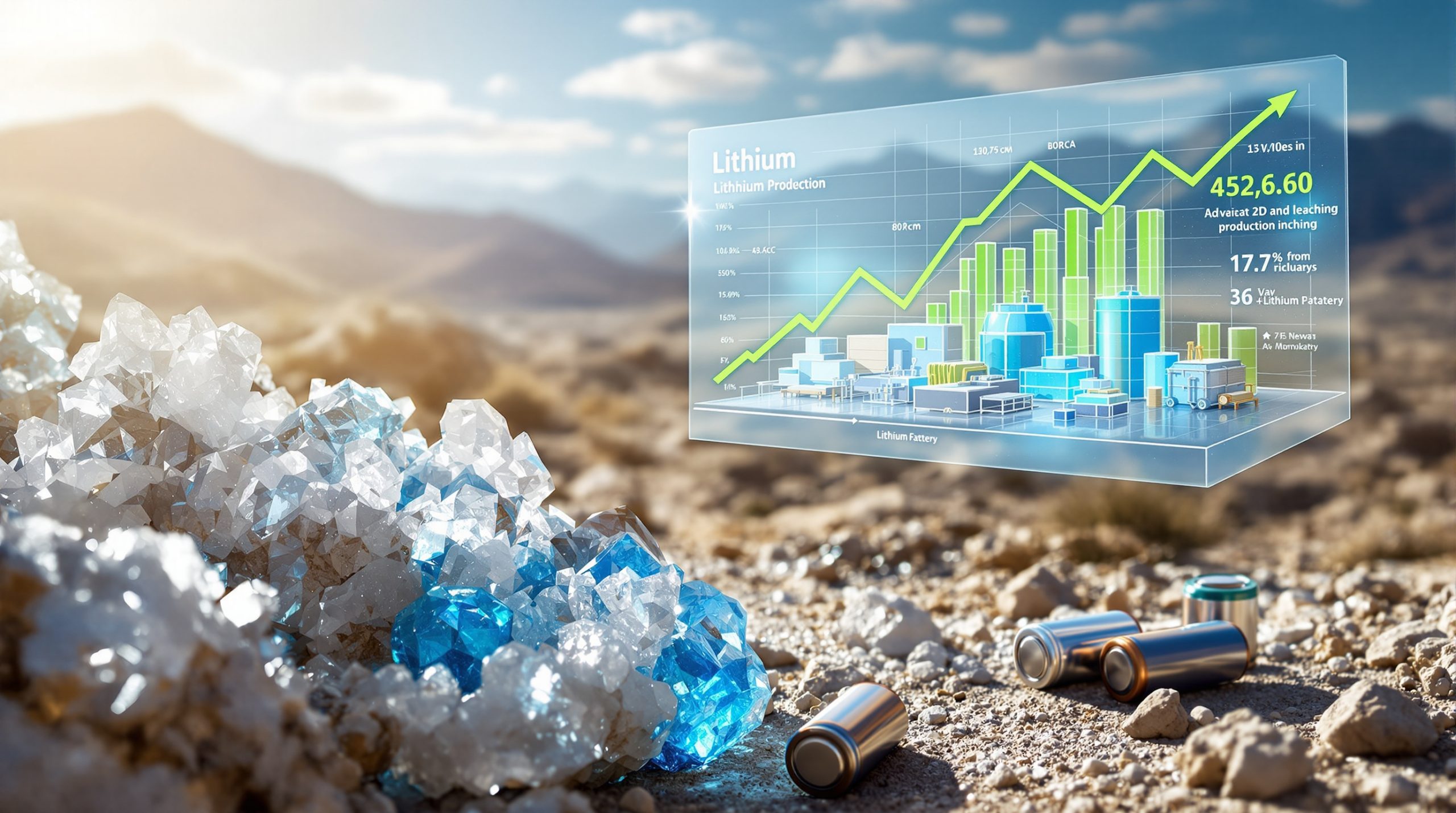What is the Liberia-Ivanhoe Atlantic Railway Deal?
The Liberia-Ivanhoe Atlantic railway agreement represents a landmark $1.8 billion investment focused on rehabilitating Liberia's existing railway infrastructure. Signed in July 2025, this strategic deal enables Ivanhoe Atlantic, a US-based mining company, to transport iron ore from neighboring Guinea through Liberian territory to coastal ports for export.
This cross-border infrastructure initiative creates the shortest export route from Guinea's iron-rich regions to global markets, fundamentally transforming regional logistics networks. The agreement aligns perfectly with Liberian President Joseph Boakai's infrastructure development agenda, which emphasizes international investment and the creation of multi-user transportation systems.
According to the US Embassy in Liberia, "This deal is a crucial step toward President Boakai's objectives of developing Liberia's multi-user rail policy and securing new international investment," highlighting the diplomatic significance of the arrangement.
Key Components of the Railway Agreement
- Investment scale: $1.8 billion total commitment for rehabilitation and operational improvements
- Primary function: Transportation corridor for Guinean iron ore to Liberian ports
- Strategic focus: Upgrading existing rail infrastructure rather than building entirely new lines
- Geographic advantage: Creates the most direct export pathway from Guinea's mineral-rich interior
- Economic model: Transportation fees and services generate revenue for Liberia
Why is This Deal Strategically Important for Liberia?
The railway agreement represents a cornerstone of Liberia's economic diversification strategy under President Boakai's administration. Rather than focusing exclusively on direct mineral extraction within its borders, Liberia is leveraging its geographic position and existing infrastructure to become a key logistics hub for the broader West African mining sector.
This approach transforms Liberia from simply being a resource-extraction economy to becoming a vital service provider in regional mineral supply chains. By positioning itself as an essential transportation corridor, Liberia creates a more sustainable and diversified economic model that benefits from neighboring countries' mining activities.
The substantial $1.8 billion foreign direct investment immediately strengthens Liberia's economy while creating a foundation for long-term revenue streams through transportation fees, port services, and related logistics activities.
Economic and Strategic Benefits for Liberia
- Revenue diversification: Creates income streams beyond traditional resource extraction
- Regional positioning: Establishes Liberia as a critical transportation hub for West Africa
- Policy advancement: Implements President Boakai's multi-user rail vision
- Investment attraction: Secures major foreign direct investment ($1.8 billion)
- Job creation: Generates employment in infrastructure rehabilitation, logistics, and support services
- Skills development: Builds local capacity in railway operations and maintenance
"This partnership represents a transformative approach to infrastructure development in West Africa, allowing Liberia to benefit from Guinea's mineral wealth through transportation services rather than solely focusing on extracting its own resources," notes the US Embassy statement supporting the deal.
How Does This Agreement Transform Regional Mining Logistics?
The Liberia-Ivanhoe Atlantic deal fundamentally reshapes mining logistics in the Guinea-Liberia corridor by creating more efficient export pathways for mineral resources. Prior to this agreement, Guinea's iron ore deposits faced significant logistical challenges reaching global markets due to limited transportation infrastructure and longer export routes.
By utilizing Liberia's rehabilitated railways, the agreement establishes the shortest possible export route for Guinea's Kon Kweni iron ore project, dramatically reducing transportation costs and time. This efficiency gain makes previously marginal iron ore deposits economically viable, potentially unlocking additional mineral resources throughout the region.
The deal also represents a shift toward greater regional economic integration, with neighboring countries collaborating on infrastructure projects that benefit multiple nations rather than pursuing isolated development strategies.
Logistical Transformation Elements
- Route optimization: Creates shortest export pathway from Guinea's Kon Kweni deposits to global markets
- System modernization: Transitions from exclusive infrastructure control to multi-user access by 2030
- Cost reduction: Lowers transportation expenses for mineral exporters
- Regional cooperation: Strengthens economic ties between Guinea and Liberia
- Supply chain efficiency: Streamlines export processes for iron ore demand insights
- Infrastructure utilization: Maximizes return on investment for existing rail assets
What is Ivanhoe Atlantic's Strategic Vision?
For Ivanhoe Atlantic, this railway agreement represents the critical missing link in their mineral development strategy. The US-based mining company has been developing the promising Kon Kweni iron ore project in Guinea but faced significant challenges in bringing the resource to market efficiently.
The $1.8 billion investment in Liberia's railway infrastructure provides Ivanhoe Atlantic with a guaranteed transportation corridor that dramatically improves the economics of their Guinean operations. With secure access to this export route, the company can confidently advance their phased production approach, starting with modest output and scaling up as market conditions permit.
Industry analysts note that Ivanhoe Atlantic's strategy aligns with broader efforts by US companies to secure access to critical minerals, with iron ore price trends increasingly recognized for their importance in infrastructure development and manufacturing.
Ivanhoe Atlantic's Strategic Objectives
- Export pathway security: Guarantees reliable transportation for Kon Kweni iron ore
- Phased development: Implements staged production beginning with 2-5 million tons annually
- Production scaling: Expands capacity to 30 million tons during second phase
- Market positioning: Establishes competitive foothold in global iron ore markets
- Mineral security advocacy: Supports designation of iron ore as critical mineral in US policy
- Investment efficiency: Leverages existing infrastructure rather than building completely new systems
When Will the Multi-User Rail System Take Effect?
The transition to Liberia's new multi-user rail policy represents a significant shift in how the country manages its strategic transportation infrastructure. Currently, much of Liberia's rail network operates under exclusive arrangements, most notably ArcelorMittal Liberia's mineral development agreement.
This exclusive model will transition to a more open-access approach when ArcelorMittal's agreement expires in 2030, creating a multi-user system with independent operators managing transportation logistics. This structural change will allow multiple mining companies to utilize the same rail corridors, maximizing infrastructure efficiency and promoting competition.
The five-year period between the signing of the Ivanhoe Atlantic deal (2025) and the full implementation of the multi-user system (2030) provides a crucial transition window during which infrastructure can be prepared and operational protocols established.
Timeline and Implementation Details
- Current structure: ArcelorMittal Liberia holds exclusive rights under mineral development agreement
- Transition trigger: Expiration of ArcelorMittal agreement in 2030
- New model: Multi-user system with independent operators managing transportation
- Preparation period: Five-year window (2025-2030) for infrastructure rehabilitation
- Operational framework: Development of access protocols and fee structures for multiple users
- Management approach: Independent operators to coordinate logistics for various mining companies
How Does This Deal Connect to US-Africa Relations?
The timing of the Liberia-Ivanhoe Atlantic railway agreement holds particular significance within the broader context of US-Africa relations. Signed just days before President Trump's five-state African summit (July 9-11, 2025), the deal represents a tangible example of American private sector engagement with African nations.
This $1.8 billion investment by a US-based company demonstrates growing economic partnership between American businesses and African countries, particularly in strategic sectors like infrastructure and critical minerals. The public statement of support from the US Embassy in Liberia further underscores the diplomatic significance of the agreement.
The deal aligns with US strategic interests in securing reliable supply chains for important minerals while supporting economic development in partner nations. By facilitating private sector investment rather than direct government aid, the agreement represents a shift toward more sustainable economic partnerships.
Diplomatic and Strategic Context
- Summit timing: Agreement signed immediately before President Trump's African summit
- Private sector engagement: Represents major US corporate investment in African infrastructure
- Supply chain security: Supports US access to critical mineral resources
- Economic partnership model: Demonstrates commercial collaboration between US and African nations
- Diplomatic endorsement: Received public support from US Embassy in Liberia
- Strategic positioning: Counters growing influence of other global powers in African mining sector
"This investment demonstrates how American companies can partner with African nations to develop infrastructure that benefits multiple countries while securing access to important mineral resources," the US Embassy statement emphasized.
What Production Capacity Will the Railway Support?
The railway infrastructure is specifically designed to accommodate Ivanhoe Atlantic's phased production approach for the Kon Kweni iron ore project in Guinea. This staged development strategy allows for gradual scaling of operations as market conditions and logistical capabilities evolve.
Initially, the railway will support modest production volumes of 2-5 million tons annually during the first phase of Kon Kweni's development. This conservative starting point allows for operational optimization and testing of the rehabilitated railway system before committing to larger volumes.
As confidence in the logistics chain grows and market demand justifies expansion, the second phase will dramatically increase production capacity to approximately 30 million tons annually. The railway rehabilitation has been engineered to accommodate this significant scaling without requiring another complete infrastructure overhaul.
Production Capacity and Scaling
- Initial phase: 2-5 million tons of iron ore annually
- Second phase: Expansion to 30 million tons annually
- Infrastructure design: Railway rehabilitation accommodates progressive capacity increases
- Synchronization: Development timeline aligned with mining production schedules
- Market responsiveness: Capacity can adjust to global iron ore forecast analysis fluctuations
- Operational flexibility: System can handle varying ore grades and volumes as production evolves
How Does This Agreement Compare to Other Regional Infrastructure Projects?
The Liberia-Ivanhoe Atlantic railway deal represents one of the largest infrastructure investments in West Africa's mining sector in recent years. At $1.8 billion, the scale of investment demonstrates significant confidence in the region's mineral potential and logistical development.
What distinguishes this agreement from many other regional infrastructure projects is its cross-border nature, connecting Guinean mines to Liberian ports. This multinational approach reflects growing recognition that optimal resource development often requires collaboration across national boundaries.
The deal also stands out for its focus on rehabilitating existing infrastructure rather than building entirely new systems, potentially offering faster implementation and better return on investment than completely new construction projects.
Comparative Analysis of Regional Infrastructure Investments
- Investment scale: $1.8 billion represents a major commitment to regional infrastructure
- Multinational structure: Connects Guinean resources to Liberian export facilities
- Strategic importance: Creates efficient export routes for otherwise landlocked resources
- Economic impact: Transforms regional logistics and trade patterns
- Implementation model: Public-private partnership with clear operational transitions
- Resource utilization: Maximizes value of existing rail assets through rehabilitation
What Are the Long-Term Implications for Regional Development?
Beyond the immediate economic benefits, the railway agreement has significant implications for long-term regional development. By establishing efficient transportation corridors between resource-rich areas and export facilities, the deal creates infrastructure that can support diversified economic activities well beyond mining.
The multi-user rail system scheduled to begin in 2030 provides a sustainable framework for ongoing infrastructure utilization, allowing multiple companies and potentially even non-mining sectors to benefit from the transportation network. This inclusive approach maximizes the long-term value of the infrastructure investment.
Additionally, the successful implementation of this cross-border collaboration may serve as a model for other regional infrastructure projects, potentially catalyzing similar mining investment opportunities throughout West Africa.
Long-Term Development Impacts
- Transportation sustainability: Establishes lasting corridors for mineral exports and other goods
- Economic diversification: Creates infrastructure supporting multiple economic activities
- Resource development: May stimulate additional mining investments along transportation corridor
- Regional integration: Strengthens economic connections between Guinea and Liberia
- Capability building: Develops specialized logistics expertise within the region
- Investment attraction: Demonstrates viability of major iron haulage operations in West Africa
Disclaimer: The long-term economic projections mentioned in this article are based on current development plans and market conditions. Actual outcomes may vary based on global commodity markets, regional political developments, and implementation effectiveness.
FAQ About the Liberia-Ivanhoe Atlantic Railway Deal
What is the total investment value of the railway agreement?
The total investment value of the agreement between Liberia and Ivanhoe Atlantic is $1.8 billion, representing one of the largest infrastructure investments in West Africa's mining sector in recent years. This substantial commitment underscores the strategic importance of the project for both the Liberian government and Ivanhoe Atlantic.
When will the multi-user rail system take effect in Liberia?
The multi-user rail system will come into force when ArcelorMittal Liberia's mineral development agreement expires in 2030. At that point, the railway will transition from exclusive control to a more open-access model, allowing multiple companies to utilize the same rail infrastructure under the management of independent operators.
What is the production capacity of Ivanhoe Atlantic's Kon Kweni project?
The Kon Kweni iron ore project in Guinea will follow a phased development approach:
- Initial phase: 2-5 million tons of iron ore annually
- Second phase: Up to 30 million tons annually
This gradual scaling allows for operational optimization and alignment with market demand while ensuring the transportation infrastructure can accommodate increasing volumes.
How does this agreement benefit Liberia economically?
Liberia benefits economically through multiple channels:
- Foreign direct investment: $1.8 billion infrastructure investment
- Transportation revenue: Fees from iron ore shipments through Liberian territory
- Employment creation: Jobs in railway rehabilitation, operations, and maintenance
- Strategic positioning: Enhanced status as regional logistics hub
- Port activity: Increased utilization of Liberian port facilities
- Economic diversification: Revenue streams beyond direct resource extraction
What role did the US government play in facilitating this agreement?
While the agreement is primarily between Liberia and Ivanhoe Atlantic (a private US-based company), the US Embassy in Liberia publicly supported the deal, highlighting its alignment with bilateral economic cooperation goals. The timing of the agreement, just before President Trump's five-state African summit in July 2025, also suggests broader diplomatic context for the investment.
Further Exploration:
Readers interested in learning more about infrastructure development in African mining can explore related educational content available at Bloomberg's coverage of the deal, which offers additional perspectives on global mining infrastructure projects and investments.
Looking to Invest in the Next Major Mineral Discovery?
Stay ahead of the market with Discovery Alert's proprietary Discovery IQ model, which provides instant notifications on significant ASX mineral discoveries, turning complex data into actionable investment insights. Understand why historic discoveries can generate substantial returns by visiting Discovery Alert's dedicated discoveries page and begin your 30-day free trial today.




